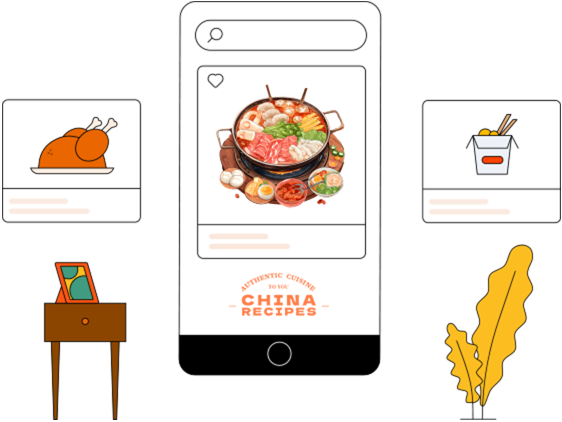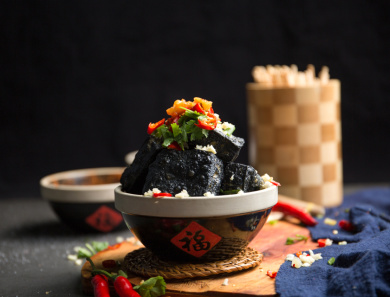What Cuisines Are at the Lantern Festival in China? A Guide to Traditional Festive Foods
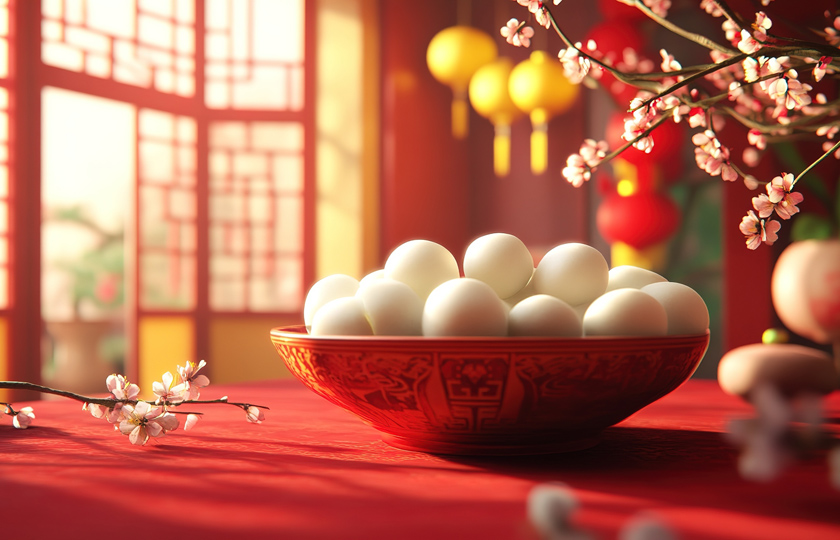
During the Lantern Festival, besides admiring beautiful lantern displays and solving riddles, delicious food is an essential part of the celebration! Today, let’s take a look at some must-eat traditional foods enjoyed during the Lantern Festival in China—how many have you tried?
Tangyuan (Sweet Rice Dumplings): A Symbol of Reunion and Happiness
Tangyuan is the signature dish of the Lantern Festival in southern China. These glutinous rice dumplings are made with a soft, chewy rice flour shell and filled with sweet fillings such as black sesame, peanut paste, or red bean paste. Once cooked, they become delightfully soft and melt in your mouth.
The name "Tangyuan" sounds similar to the Chinese word for "reunion" (团圆, tuányuán), making them a symbol of family togetherness and harmony. On the Lantern Festival, families gather around to enjoy a warm bowl of tangyuan, signifying happiness and unity.
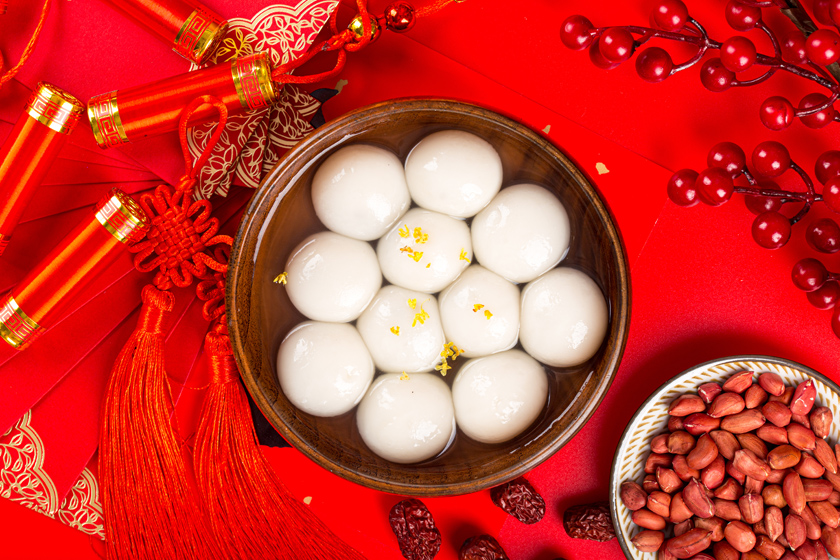
Yuanxiao (Glutinous Rice Balls): A Wish for Good Fortune and Fulfillment
Although yuanxiao and tangyuan may look similar, they differ in their preparation methods.
Yuanxiao is a traditional northern Chinese delicacy. The filling is cut into small chunks and rolled in dry glutinous rice flour multiple times until a round shape forms, creating a firmer texture compared to tangyuan.
Eating yuanxiao during the Lantern Festival represents good fortune, unity, and a fulfilling life in the coming year. It is a beloved treat that brings families together to celebrate joy and prosperity.
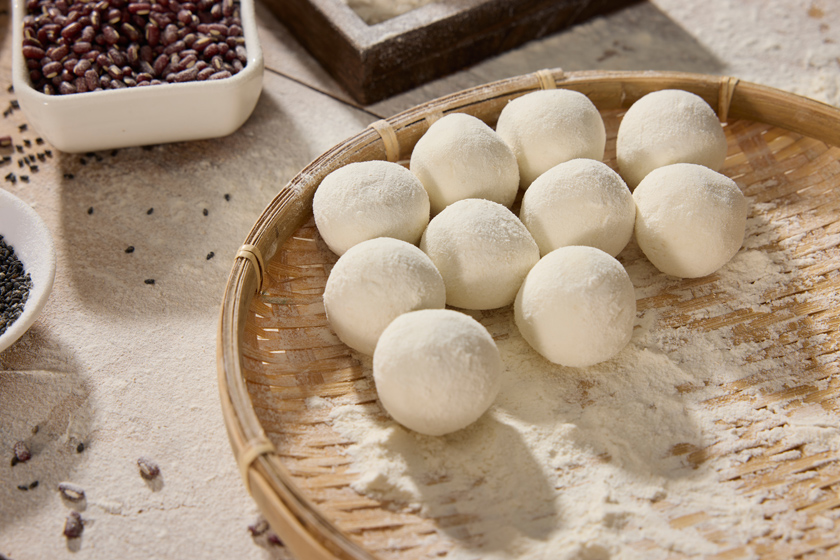
Dumplings: A Symbol of Wealth and Prosperity
Who says dumplings are only for the Spring Festival? In many northern regions of China, dumplings are also a popular dish for the Lantern Festival!
Dumplings are a staple of Chinese cuisine, made from dough wrapped around flavorful fillings such as pork, beef, lamb, seafood, and various vegetables. They are both delicious and nutritious.
Shaped like ancient Chinese gold ingots, steaming dumplings resemble a "treasure pot", symbolizing wealth and good fortune. Different fillings also carry special meanings—chive dumplings (韭菜, jiǔcài) symbolize "long-lasting wealth", while cabbage dumplings (白菜, báicài) represent "hundreds of blessings". The more dumplings you eat, the more prosperity you invite into the new year!
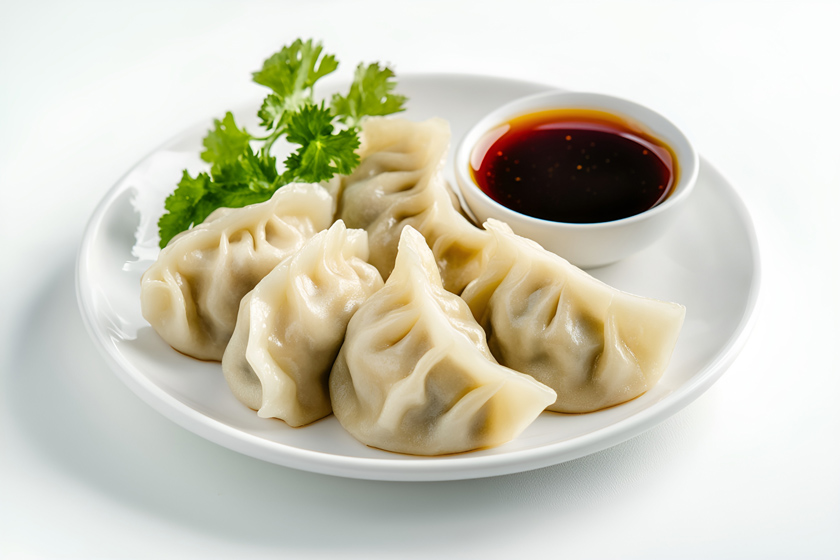
Rice Cake (Nian Gao): A Wish for Growth and Success
Soft, chewy, and slightly sweet, nian gao (rice cake) is made from glutinous rice and can be steamed, pan-fried, or cooked in sweet soups.
Eating nian gao during the Lantern Festival holds a special meaning—"Gao" (糕) sounds like "high" (高) in Chinese, symbolizing progress and success in life. People believe that eating rice cakes will bring them academic achievements, career advancements, and personal growth.
Each region in China has its unique variations of rice cake. Some popular types include osmanthus rice cake from Suzhou, red date rice cake from Shandong, assorted fruit rice cake from Beijing, and golden coconut rice cake from Guangdong.
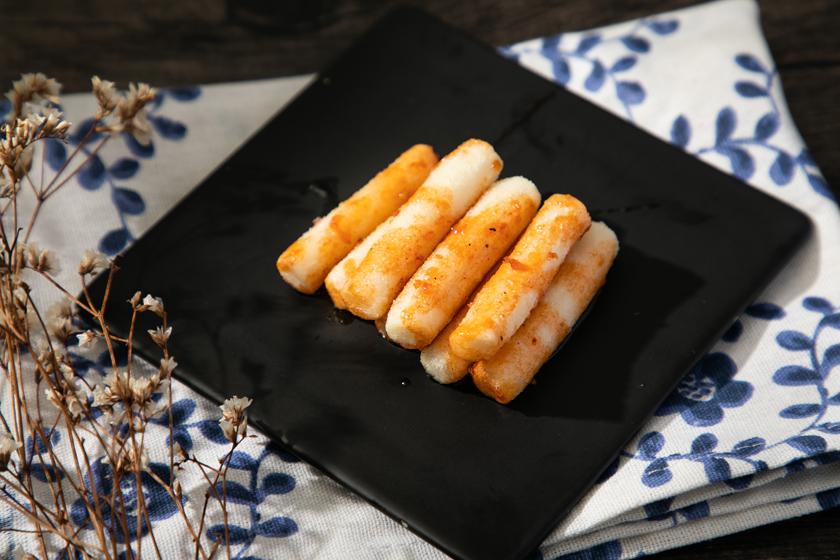
Lettuce (Shēng Cài): A Symbol of Prosperity
In Guangdong, lettuce is a must-have dish during the Lantern Festival.
The Chinese word “shēng cài” (生菜) sounds like “shēng cái” (生财), meaning "growing wealth." Eating lettuce on this day symbolizes prosperity, good fortune, and financial success in the coming year.
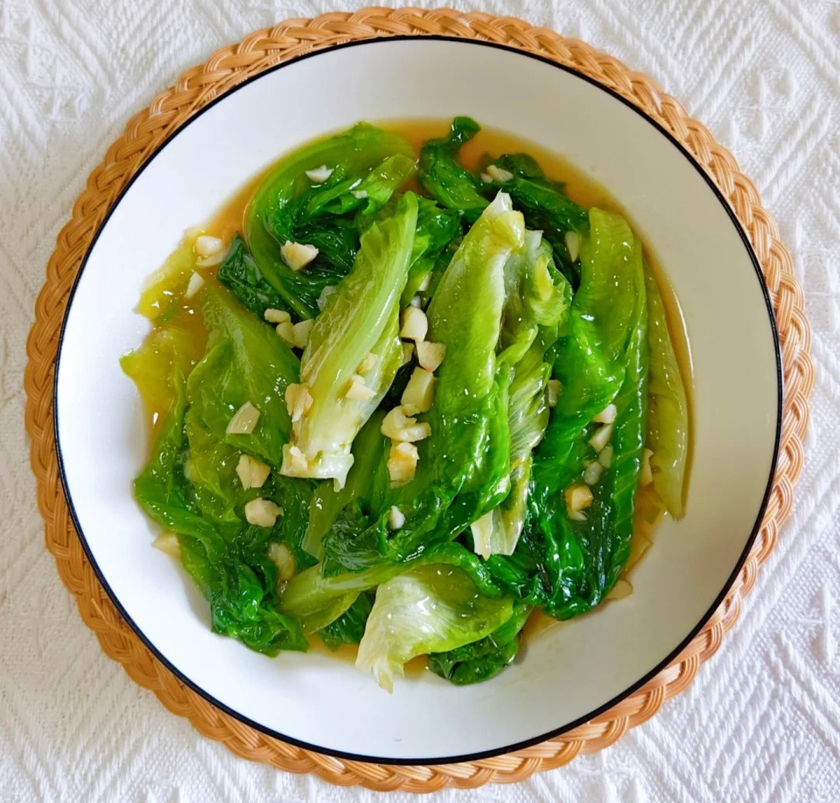
Oil Tea (Yóu Chá): A Wish for Abundance
Oil tea is a traditional delicacy of the Dong and Yao ethnic groups in Guangxi, Guizhou, and Hunan. Unlike regular tea, oil tea is a thick, porridge-like dish made from roasted tea leaves and ground grain flour, simmered to a rich consistency. Ingredients such as crushed sesame seeds and peanuts are added for extra aroma and flavor.
During the Lantern Festival, people in these regions enjoy oil tea as a symbol of a bountiful harvest and a fulfilling life. The steaming hot, fragrant tea also represents warmth, festivity, and community spirit.
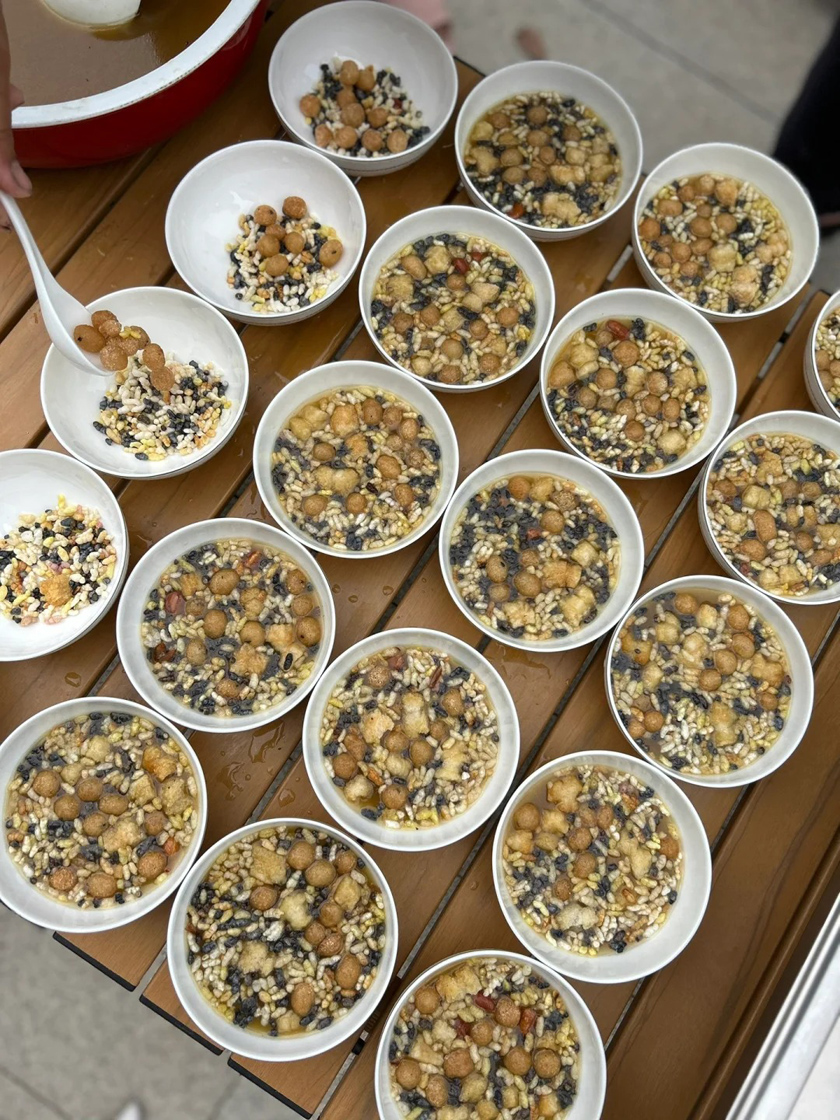
Noodles: Longevity and Endless Blessings
In Jiangsu and Zhejiang, eating noodles during the Lantern Festival is a cherished tradition. The long, silky strands symbolize continuous happiness, longevity, and good fortune.
A bowl of noodles represents a smooth and prosperous year ahead, filled with joy and success.
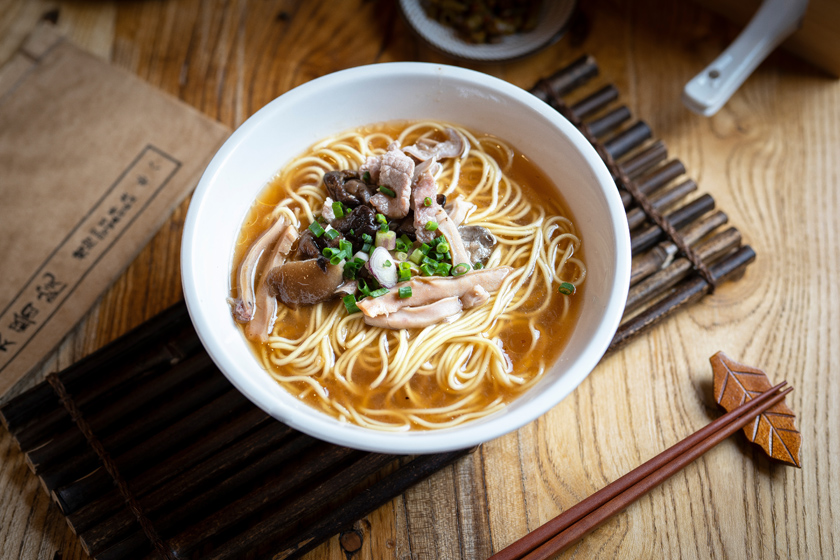
Flour Lanterns (Miàn Dēng): Peace and Prosperity
In some northern regions, people make miàn dēng, edible lanterns crafted from dough. These are shaped into various designs, such as animals or flowers, with a small hollow in the center to hold oil and a wick.
On the night of the Lantern Festival, families light these flour lanterns and place them by windows or doorways. The glowing lights symbolize illuminating darkness, driving away bad luck, and bringing peace and good fortune.
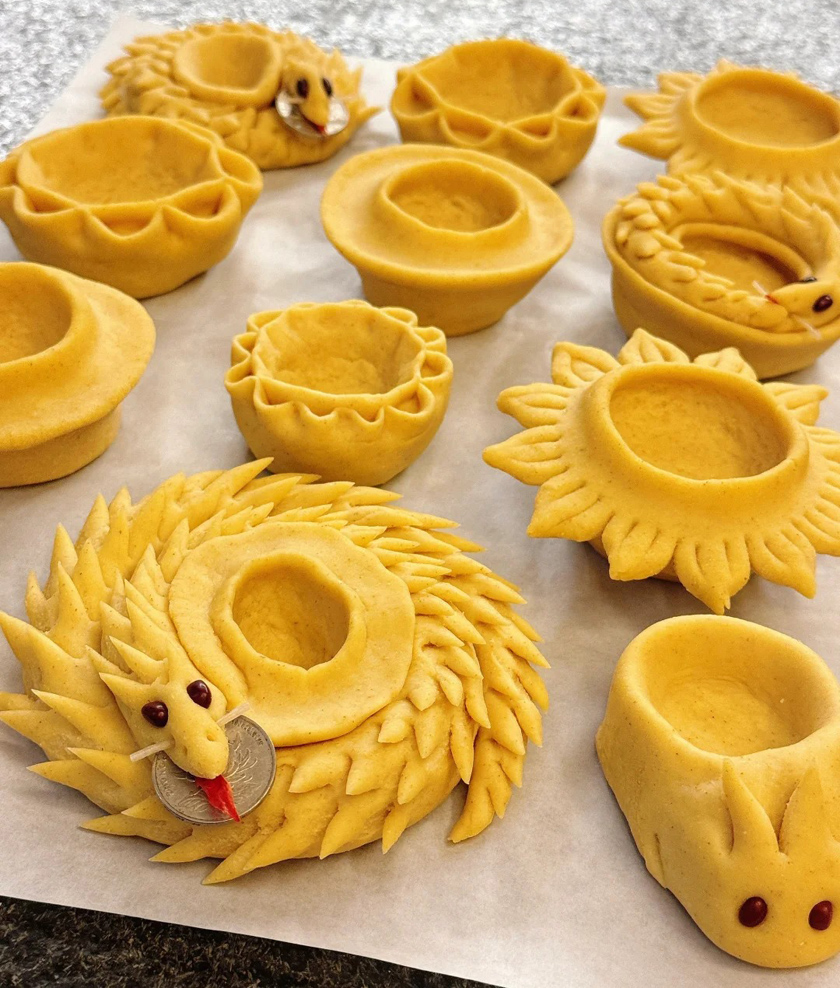
Spring Rolls: Welcoming the New Year
Spring rolls have been a part of Chinese cuisine since the Western Jin Dynasty (3rd century CE). These crispy, golden rolls are filled with seasonal vegetables and meat, such as shepherd’s purse, leeks, carrots, bamboo shoots, pork, shrimp, or tofu.
Eating spring rolls during the Lantern Festival symbolizes welcoming spring, reunion, and happiness. The golden color also represents wealth and prosperity.
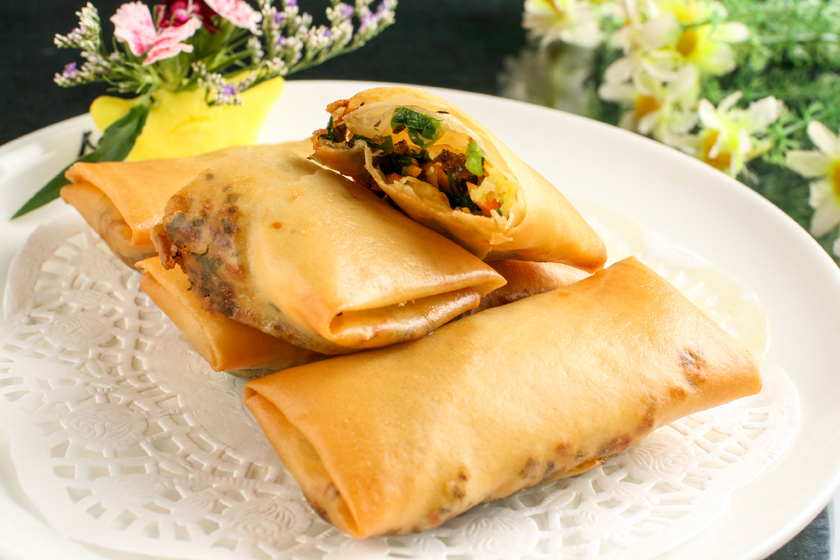
Fish: A Year of Abundance
Fish is one of the most auspicious dishes for the Lantern Festival, as the Chinese phrase "nián nián yǒu yú" (年年有余) means "may you have surplus every year."
Different regions prepare fish in unique ways, including:
Steamed turbot and pan-fried pomfret (Guangdong)
Braised yellow croaker with rice cakes and squirrel-shaped mandarin fish (Jiangsu & Zhejiang)
Spicy braised crucian carp (Sichuan)
Sweet and Sour Fish (Shandong)
Each dish represents prosperity, wealth, and abundance.
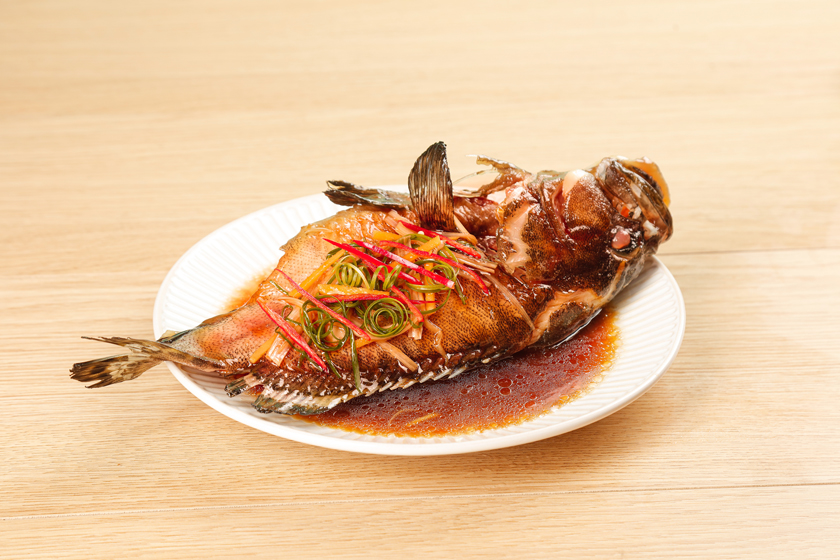
Chicken: Good Luck and Fortune
In many regions, chicken is an essential dish during the Lantern Festival, symbolizing “great luck and prosperity” (大吉大利, dà jí dà lì).
In Guangdong, whole chickens are preferred when making soup, emphasizing wholeness and unity within the family. Other popular chicken dishes include:
Stewed chicken with mushrooms (Northeast China)
Xinjiang-style braised chicken (Dà Pán Jī, 新疆大盘鸡)
Spicy diced chicken (Sichuan & Guizhou)
Cantonese white-cut chicken and soy sauce chicken
These dishes represent family togetherness and blessings for the new year.
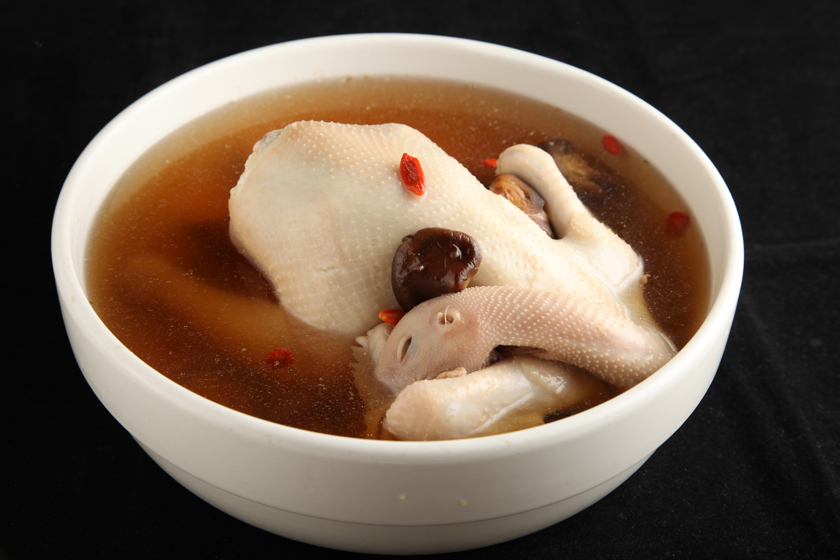
Eight-Treasure Rice (Bā Bǎo Fàn): Unity and Prosperity
Eight-treasure rice is a classic glutinous rice dessert made with lotus seeds, red dates, barley, candied fruits, and nuts.
Eating bā bǎo fàn during the Lantern Festival symbolizes family unity, good fortune, and a prosperous future. The variety of ingredients represents abundance and richness in life.
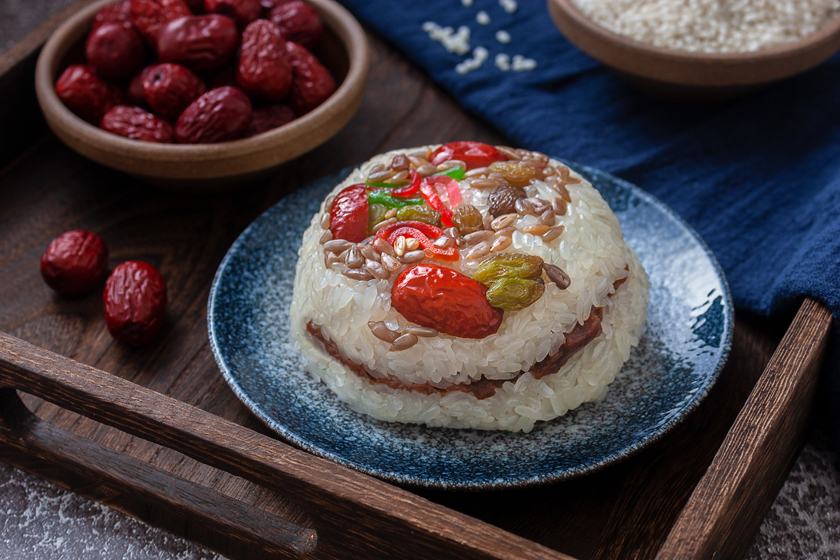
Lantern Festival Tea (Yuán Xiāo Chá): A Unique Festive Drink
In Shaanxi and other regions, people celebrate the Lantern Festival with a special Yuán Xiāo Chá (元宵茶).
This tea is made by brewing a strong tea base and adding ingredients like peanuts, sesame seeds, walnuts, red dates, and longan. Some variations even include mini tangyuan for a chewy texture.
Drinking this tea is believed to bring warmth, good health, and a colorful life in the coming year.
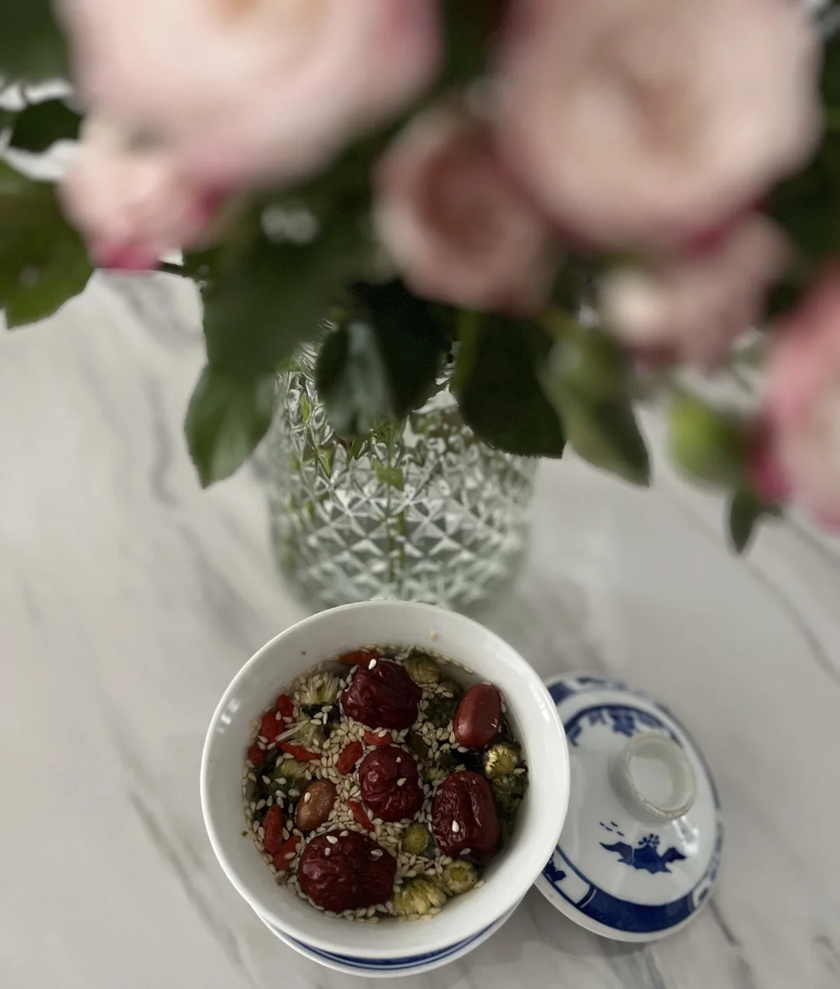
Traditional Customs and Celebrations of the Lantern Festival in China
1. Admiring Lantern Displays
One of the most important traditions of the Lantern Festival is admiring lanterns.
As early as the Western Han Dynasty (206 BC–9 AD), people would hang lanterns on the fifteenth day of the first lunar month. By the Sui and Tang dynasties, lantern displays became even more elaborate.
On this special night, streets and homes across China are illuminated with colorful lanterns in various shapes and designs, creating a festive and lively atmosphere.
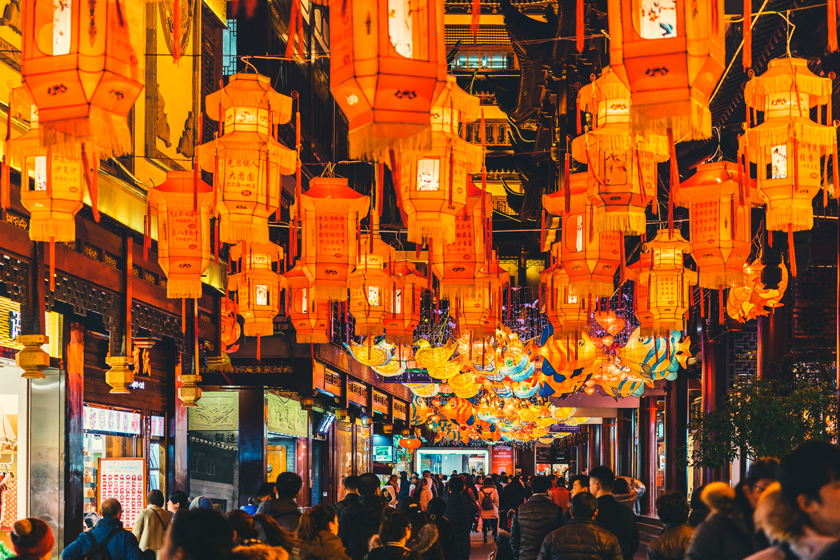
2. Solving Lantern Riddles
Solving riddles on lanterns is a traditional activity that dates back to the Song Dynasty (960–1279 AD).
People write riddles on small slips of paper and attach them to beautifully lit lanterns for others to guess.
These riddles often cover various topics, including history, literature, and daily life, making the activity both entertaining and educational.
3. Dragon and Lion Dances
The dragon dance and lion dance are iconic folk performances during the Lantern Festival, originating from ancient rituals for blessing and warding off evil spirits.
The dragon dance symbolizes good weather, prosperity, and national peace.
The lion dance represents good fortune and happiness.
These energetic and rhythmic performances bring joy and good luck while adding to the festive spirit.
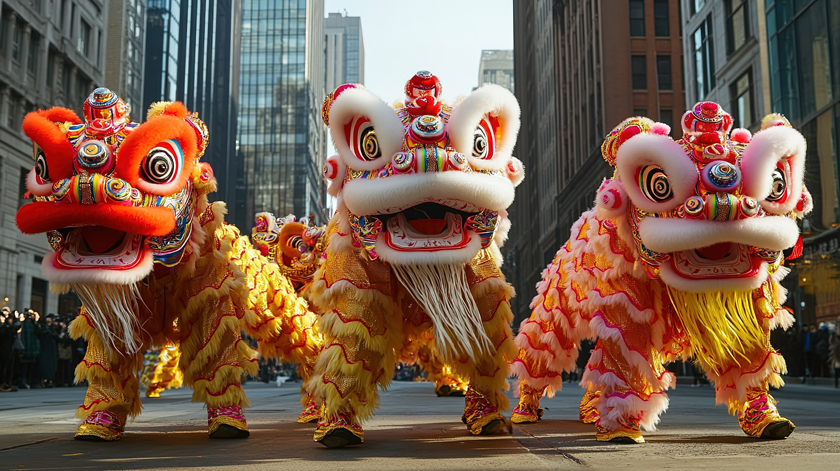
4. Stilt Walking Performances
Stilt walking is another spectacular folk performance during the Lantern Festival.
Performers stand on stilts up to 1–2 meters high, executing dances, martial arts moves, and even swordplay.
This traditional act requires great balance and skill, making it a thrilling highlight of the festival.
5. Land Boat Performance
The land boat dance, also known as “running land boat” (划旱船), is a unique performance that mimics rowing a boat on land.
Performers dress in boat-shaped costumes, hold wooden paddles, and move gracefully to traditional folk songs.
This lively and humorous act adds a sense of joy and festivity to the celebrations.
6. "Walking to Dispel Illness" (走百病)
"Walking to Dispel Illness" is a health-related tradition observed on the night of the Lantern Festival.
Women gather in groups and walk through streets and across bridges, believing that crossing bridges can help ward off diseases and bring longevity.
This custom reflects people's hopes for good health and well-being in the new year.





